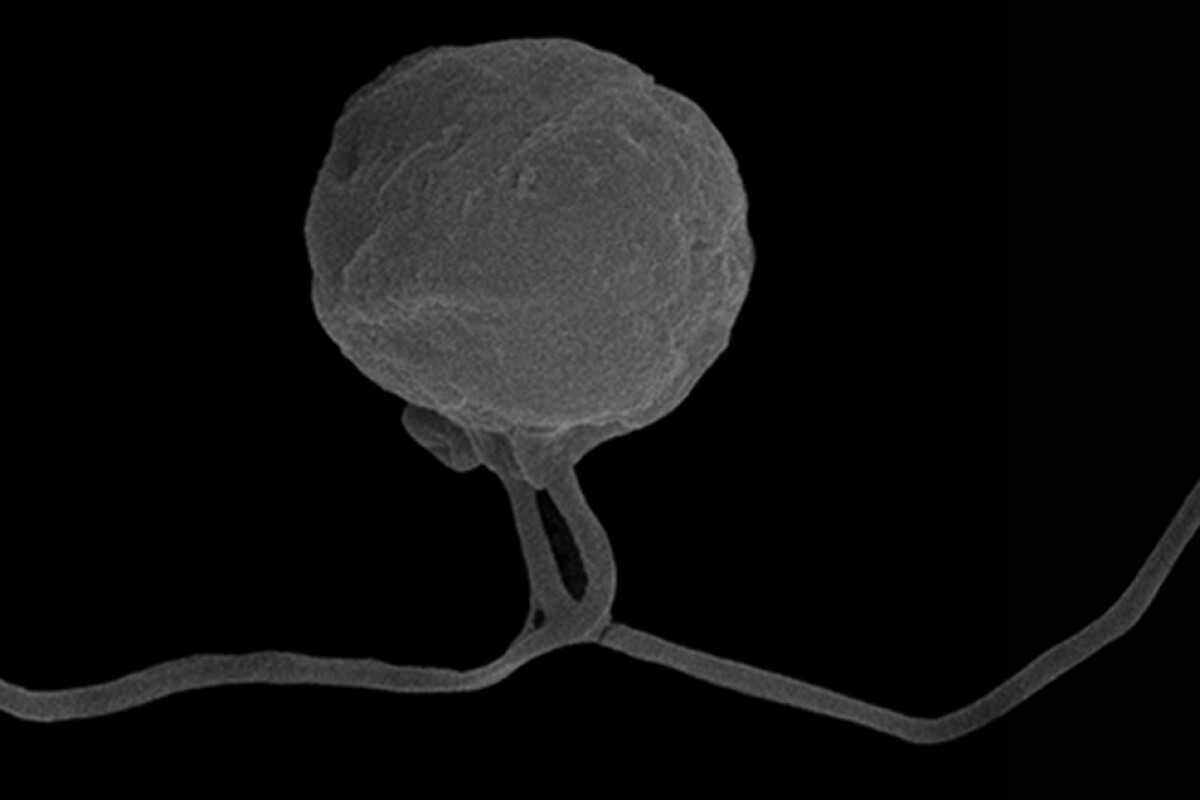
We missed this for decades. What else have we missed? Is there some way in which we can select biomes and then produce a spectrum of DNA that separates out the knowns.
right now we do not understand its purpose at all.
Again, like our alien DNA, this is also an opportunity to try the Rosetta stone approach to define purpose. We are getting there.
New branch on Tree of Life contains organisms unlike any others on Earth
December 07, 2022
A microscope image of a Provoran, a micro-organism from the newly discovered supergroup
Tikhonenkov, Mikhailov, Gawryluk, Belyaev, Mathur, Karpov, Zagumyonnyi, Borodina, Prokina, Mylnikov, Aleoshin, and Keeling, Nature
https://newatlas.com/biology/tree-of-life-new-branch-unique-predator-organisms/?
Scientists have discovered a completely new branch on the tree of life. This “supergroup” contains an incredibly diverse range of predatory microbes that are extremely different genetically from any other form of life on Earth.
The tree of life is a useful diagram for understanding the relationships between different forms of life, present and extinct. The trunks are made up of three broad groups called domains – Bacteria, Archaea and Eukaryota – which then branch into kingdoms such as animals and fungi. From there the branches become more and more specific until you reach individual species.
The new discovery adds quite a major bough to the tree – Provora. These lifeforms make up a category informally called a “supergroup,” which sits below domains and can contain multiple kingdoms.
“This is an ancient branch of the tree of life that is roughly as diverse as the animal and fungi kingdoms combined, and no one knew it was there,” said Dr. Patrick Keeling, senior author of the study.
Members of the Provora supergroup are tiny organisms that the team describes as the “lions of the microbial world.” That’s because they prey upon other microbes, and within their ecosystem they’re relatively rare. The supergroup is further divided into two clades – the “nibblerids,” which use tooth-like structures to nibble chunks off their prey, and the “nebulids,” which engulf their prey whole.
The team discovered this new kind of life in samples taken from around the world, including the coral reefs in Curaçao, sediment from the Black and Red seas and water from the Pacific and Arctic oceans. The researchers’ attention was drawn to strange microbes with two flagella, allowing them to spin or swim very quickly. They also had a tendency to quickly gobble up any other microbes unfortunate enough to be kept in the same water samples. When the scientists examined their DNA more closely, it became clear just how weird these new microbes really were.
“In the taxonomy of living organisms, we often use the gene ‘18S rRNA’ to describe genetic difference,” said Dr. Denis Tikhonenkov, first author of the study. “For example, humans differ from guinea pigs in this gene by only six nucleotides. We were surprised to find that these predatory microbes differ by 170 to 180 nucleotides in the 18S rRNA gene from every other living thing on Earth. It became clear that we had discovered something completely new and amazing.”
Next, the team plans to sequence the whole genomes of these new organisms and build 3D models of their cells, to learn more about them.
No comments:
Post a Comment